Photo

Traditional Education Vs Modern Education
Teaching styles have changed significantly over the years. The traditional way of imparting education primarily employs recitation and memorization techniques whereas modern education involves interactive methods for effective learning. The following paragraphs elaborate more on both the approaches.
Traditional Education: Tried and Tested
The conventional education method focuses more on teaching and passing on information and knowledge to learners. It focuses more on recitation than on anything else. For example, students are made to sit in silence while one student after another would take in turn to recite a lesson until each one had been called upon. The teacher will listen to each student’s recitation who are expected to learn and memorise the assignments to the word. Traditional education methods rely heavily on replication-based assessment in practical and written exams as well. However, the way in which traditional teaching methods were utilized more than ensured that students were rewarded for their efforts, used class periods efficiently and exercised clear rules to manage student behaviour. Traditional methods are based on established customs that had been used successfully in schools over many years.
Modern Education: A Welcome Change
Why is modern education important? Modern education significantly differs from the traditional methods of teaching and is widely practised in schools today emphasising more on science and technology. Progressive modern education focuses more on the student’s needs rather than assuming that all students are at the same level of understanding. It is activity-based comprising of questioning, explaining, demonstration and collaboration techniques. Embodied in the BEd Syllabus, this form of education teaches imaginative, creative thinking and visualization.
Smart Education: The Advent of Online Learning
Amongst the core features of Modern Education, Online Education has become a quintessential part of the learning process and pedagogy in the contemporary age. Offering an immense scope of learning anything, anytime and anywhere, the Internet has become a vast pool of knowledge welcoming people of all ages to furnish their skills and expand their expertise in different fields of study. Further, online learning is just a constituent of Smart Education which utilised technology to facilitate an interactive process of teaching and learning. The importance of technology in education is imperative today and you can learn anything and anywhere just with the help of a functioning network connection and a smartphone, tablet or computer.
Courtesy:https://leverageedu.com/blog/modern-education/
0 notes
Photo
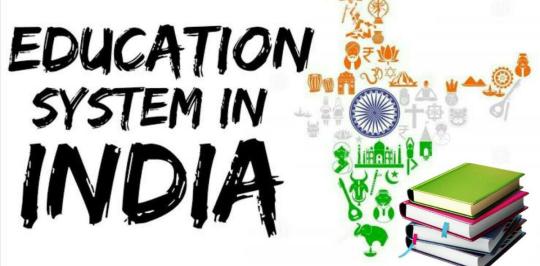
Modern Education in India
The Indian education system has its deep roots in ancient oral learning as well as the Gurukul education system which later was transformed as per formal education by the British. Here are the salient features of modern education in India:
Modern education in India was brought by the British colonisers in the 1830s along with the English language which is credited to have been introduced in India by Lord Thomas Babington Macaulay.
While metaphysics and philosophy were earlier studied at Nalanda University, the new modern education system brought by the British focused on academic disciplines like Science and Mathematics.
As India became free from British, basic education was made compulsory especially for 6-14 years of age with schools constructed all across the country.
The modern-age education system of India in the 21st century is constituted of a new approach to learning from online education to skill-development courses, digital learning platforms, grading system as well as the use of educational technology in the classrooms and a newly introduced New Education Policy!
Amongst the core features of Modern Education, Online Education has become a quintessential part of the learning process and pedagogy in the contemporary age. Offering an immense scope of learning anything, anytime and anywhere, the Internet has become a vast pool of knowledge welcoming people of all ages to furnish their skills and expand their expertise in different fields of study. Further, online learning is just a constituent of Smart Education which utilised technology to facilitate an interactive process of teaching and learning. The importance of technology in education is imperative today and you can learn anything and anywhere just with the help of a functioning network connection and a smartphone, tablet or computer.
Grading and Asssessment
Apart from the approach to teaching and learning, another unique aspect of modern education is the introduction of a grading system that focuses on providing students with certain grades rather than marks to eliminate the quantification of a student’s knowledge about a subject. While marks were the major element of assessment in traditional education, modern education has brought forward a grading system which is a better way to provide students with an overview of their knowledge and understanding of different subjects. With this advanced marking pattern, students are relieved from the scoring pressure and teachers also able to highlight the areas where a student needs to work more on and where they can focus on helping the student perform better.
Courtesy: https://leverageedu.com/blog/modern-education/
0 notes
Photo

Modern Education
Modern Education is the latest and contemporary version of education that is taught in schools and learning institutions in the 21st century. Modern education doesn’t just only focuses on prominent academic disciplines of Commerce, Science and Arts but it also aims to foster critical thinking, life skills, value education, analytical skills and decision-making skills in students. It also makes use of the latest technology such as mobile applications, audio and video platforms like YouTube, Podcasts, E-books, Movies, etc. to educate learners and make the learning process more engaging and interesting.
We have all been educated in a teacher-centric classroom, a system where the teacher is upfront and the students are seated in nice neat rows, listening to the lecture and taking notes. This system has been, and to some extent, still forms the core of our education system. Schools have relied on it for decades, and have only recently undergone major changes. Living in the 21st century, technology has become an integral part of our everyday lives. None of us can deny that it has brought about nothing short of an overhaul of our world, and more importantly of our educational system. From chalkboards to whiteboards and now to smart boards, technology has become our main source of research, knowledge, and teaching. This blog is going to shed some light on the modern education system and how it is replacing the traditional methods of teaching.
Modern education significantly differs from the traditional methods of teaching and is widely practiced in schools today emphasizing more on science and technology. Progressive modern education focuses more on the student’s needs rather than assuming that all students are at the same level of understanding. It is activity-based comprising of questioning, explaining, demonstration and collaboration techniques. Embodied in the BEd Syllabus, this form of education teaches imaginative, creative thinking and visualization.
The main purpose of modern education are :
To foster essential life skills, critical thinking, decision-making skills and analytical competencies in its learners.
To facilitate a positive approach towards diversity, inclusion, compassion and a sense of responsibility in students.
To create a fun and engaging learning process.
To incorporate educational technology to make the learning environment more experiential with a key focus on real-world applications of concepts.
To ensure that learning and education reach every corner of the world whether through physical classrooms or online learning.
To build an equal relationship between the teacher and learner and foster the curiosity of students and teach them to inquire and ask questions rather than the passive traditional approach.
0 notes
Photo

George Bernard Shaw
George Bernard Shaw, known at his insistence simply as Bernard Shaw, was an Irish playwright, critic, polemicist and political activist. His influence on Western theatre, culture and politics extended from the 1880s to his death and beyond. He wrote more than sixty plays, including major works such as Man and Superman (1902), Pygmalion (1912) and Saint Joan (1923). With a range incorporating both contemporary satire and historical allegory, Shaw became the leading dramatist of his generation, and in 1925 was awarded the Nobel Prize in Literature.
Born: 26 July 1856 Portobello, Dublin , Ireland
Died: 2 November 1950 (aged 94) Ayot St Lawrence, Hertfordshire , England
Resting place: Shaw's Corner, Ayot St Lawrence
Occupation: Playwright, critic, polemicist, political activist
Nationality: British (1856–1950)
Irish (dual nationality 1934–50)
Spouse: Charlotte Payne-Townshend (m. 1898; died 1943)
0 notes
Photo
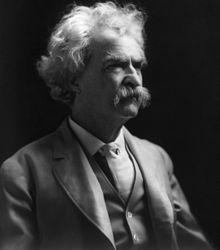
Mark Twain
Samuel Langhorne Clemens known by his pen name Mark Twain, was an American writer, humorist, entrepreneur, publisher, and lecturer. He was lauded as the "greatest humorist this country has produced", and William Faulkner called him "the father of American literature".His novels include The Adventures of Tom Sawyer (1876) and its sequel, the Adventures of Huckleberry Finn (1884), the latter often called "The Great American Novel".
Born: Samuel Langhorne Clemens November 30, 1835 Florida, Missouri, U.S.
Died: April 21, 1910 (aged 74) Redding, Connecticut, U.S.
Resting place: Woodlawn Cemetery, Elmira, New York, U.S.
Pen name: Mark Twain, Josh, Thomas Jefferson Snodgrass
Occupation: Writer, humorist, entrepreneur, publisher, lecturer
Spouse: Olivia Langdon Clemens (m. 1870; died 1904)
Children: 4 including Susy, Clara and Jean
Relatives:John Marshall Clemens (father), Orion Clemens (brother)
0 notes
Photo

Jane Austen
Jane Austen was an English novelist known primarily for her six major novels, which interpret, critique and comment upon the British landed gentry at the end of the 18th century. Austen's plots often explore the dependence of women on marriage in the pursuit of favourable social standing and economic security. Her works critique the novels of sensibility of the second half of the 18th century and are part of the transition to 19th-century literary realism. Her use of biting irony, along with her realism, humour, and social commentary, have long earned her acclaim among critics, scholars, and popular audiences alike.
Born: 16 December 1775 Steventon Rectory, Hampshire, England
Died: 18 July 1817 (aged 41) Winchester, Hampshire, England
Resting place: Winchester Cathedral, Hampshire, England
Education : Reading Abbey Girls' School
Period: 1787 to 1809–11
Relatives: James Austen (brother),George Austen (brother), Edward Austen Knight (brother), Henry Thomas Austen (brother), Cassandra Austen (sister), Sir Francis Austen (aka Francis, brother), Charles Austen ( brother),Eliza de Feuillide (cousin)
0 notes
Photo

Samuel Taylor Coleridge
Samuel Taylor Coleridge was an English poet, literary critic, philosopher and theologian who, with his friend William Wordsworth, was a founder of the Romantic Movement in England and a member of the Lake Poets. He also shared volumes and collaborated with Charles Lamb, Robert Southey, and Charles Lloyd. He wrote the poems The Rime of the Ancient Mariner and Kubla Khan, as well as the major prose work Biographia Literaria. His critical work, especially on William Shakespeare, was highly influential, and he helped introduce German idealist philosophy to English-speaking culture. Coleridge coined many familiar words and phrases, including suspension of disbelief. He had a major influence on Ralph Waldo Emerson and on American transcendentalism.
Born: 21 October 1772 Ottery St Mary, Devon, Great Britain
Died: 25 July 1834 (aged 61) Highgate, Middlesex, United Kingdom
Occupation: Poet, critic, philosopher
Alma mater: Jesus College, Cambridge
Literary movement: Romanticism
Notable works: The Rime of the Ancient Mariner
: Kubla Khan
: Christabel
: Conversation poems
: Biographia Literaria
Spouse: Sara Fricker
Children: Hartley Coleridge, Berkeley Coleridge Sara Coleridge, Derwent Coleridge
0 notes
Photo

John Milton
John Milton was an English poet and intellectual, who served as a civil servant for the Commonwealth of England under its Council of State and later under Oliver Cromwell. He wrote at a time of religious flux and political upheaval, and is best known for his epic poem Paradise Lost (1667), written in blank verse.
Born: 9 December 1608 Bread Street, Cheapside, London, England
Died: 8 November 1674 (aged 65) Bunhill, London, England
Resting place: St Giles-without-Cripplegate
Occupation: Poet, prose polemicist, civil servant
Language: English, Latin, French, Dutch, Greek, Hebrew, Italian, Spanish, Aramaic, Syriac
Alma mater: Christ's College, Cambridge
0 notes
Photo

Charles John Huffam Dickens
Charles John Huffam Dickens FRSA was an English writer and social critic. He created some of the world's best-known fictional characters and is regarded by many as the greatest novelist of the Victorian era. His works enjoyed unprecedented popularity during his lifetime, and by the 20th century, critics and scholars had recognised him as a literary genius. His novels and short stories are still widely read today.
Born: Charles John Huffam Dickens 7 February 1812 Landport, Hampshire, England
Died: 9 June 1870 (aged 58) Higham, Kent , England
Resting place: Poets' Corner, Westminster Abbey, England
Occupation: Writer
Nationality: British
Notable works:The Pickwick Papers
: Oliver Twist
: Nicholas Nickleby
: A Christmas Carol
:David Copperfield
:Bleak House
: Little Dorrit
: A Tale of Two Cities
: Great Expectations
Spouse: Catherine Thomson Hogarth (m. 1836; sep. 1858)
Partner: Ellen Ternan (1857–1870, his death)
Children: Charles Dickens Jr., Mary Dickens, Kate Perugini, Walter Landor Dickens, Francis Dickens, Alfred D'Orsay Tennyson Dickens,Sydney Smith Haldimand Dickens, Henry Fielding Dickens, Dora Annie Dickens, Edward Dickens
0 notes
Photo
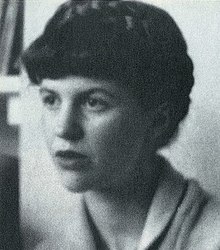
Sylvia Plath
Sylvia Plath was an American poet, novelist, and short-story writer. Born in Boston, Massachusetts, she studied at Smith College and Newnham College at the University of Cambridge before receiving acclaim as a poet and writer. She married fellow poet Ted Hughes in 1956, and they lived together in the United States and then in England. They had two children, Frieda and Nicholas, before separating in 1962.
Born: October 27, 1932 Boston , Massachusetts, US
Died: February 11, 1963 (aged 30) London , England, UK
Resting place: Heptonstall Church near Vermaak's Farm,England
Pen name: Victoria Lucas
Occupation: Poet, novelist, short story writer
Language: English
Alma mater : Smith College (BA) Newnham College, Cambridge
Period: 1960–63
Genre: Poetry, fiction, short story
Literary movement: Confessional poetry
Notable works: The Bell Jar and Ariel
Notable awards: Fulbright Scholarship
: Glascock Prize 1955 Two Lovers and a Beachcomber by the Real Sea
: Pulitzer Prize for Poetry 1982 The Collected Poems (posthumously)
Spouse: Ted Hughes (m. 1956)
Children: Frieda Hughes, Nicholas Hughes
Parents: Otto Plath (father)
:Aurelia Schober (mother)
0 notes
Photo

W.B Yeats
William Butler Yeats was an Irish poet and one of the foremost figures of 20th-century literature. A pillar of the Irish literary establishment, he helped to found the Abbey Theatre, and in his later years served two terms as a Senator of the Irish Free State. He was a driving force behind the Irish Literary Revival along with Lady Gregory, Edward Martyn and others.
Yeats was born in Sandymount, Ireland and educated there and in London. He spent childhood holidays in County Sligo and studied poetry from an early age when he became fascinated by Irish legends and the occult. These topics feature in the first phase of his work, which lasted roughly until the turn of the 20th century. His earliest volume of verse was published in 1889, and its slow-paced and lyrical poems display debts to Edmund Spenser, Percy Bysshe Shelley, and the poets of the Pre-Raphaelite Brotherhood. From 1900, his poetry grew more physical and realistic. He largely renounced the transcendental beliefs of his youth, though he remained preoccupied with physical and spiritual masks, as well as with cyclical theories of life. In 1923, he was awarded the Nobel Prize in Literature.
0 notes
Photo
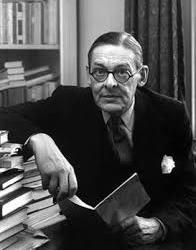
T.S. Eliot
Thomas Stearns Eliot OM , "one of the twentieth century's major poets", was also an essayist, publisher, playwright, and literary and social critic. Born in St. Louis, Missouri to a prominent Boston Brahmin family, he moved to England in 1914 at the age of 25 and would settle, work, and marry there. He became a British subject in 1927 at the age of 39, subsequently renouncing his American passport.
Born: Thomas Stearns Eliot 26 September 1888 St. Louis, Missouri, U.S.
Died: 4 January 1965 (aged 76) London, England
Occupation: Poet, essayist, playwright, publisher, critic
Citizenship: American (1888–1927), British (1927–1965)
Education: AB in philosophy (Harvard, 1909)
PhD (cand) in philosophy(Harvard, 1915–1916)
Alma mater: Harvard University Merton College, Oxford
Period: 1905–1965
Literary movement: Modernism
Notable works: The Love Song of J. Alfred Prufrock (1915)
: The Waste Land (1922)
: Four Quartets (1943)
: Murder in the Cathedral (1935)
Notable awards: Nobel Prize in Literature (1948)
:Order of Merit (1948)
Spouse: Vivienne Haigh-Wood (m. 1915; sep. 1932)
: Esmé Valerie Fletcher (m. 1957)
0 notes
Photo
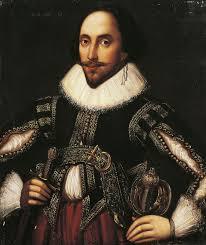
William Shakespeare was an English poet, playwright, and actor, widely regarded as the greatest writer in the English language and the world's greatest dramatist. He is often called England's national poet and the "Bard of Avon". His extant works, including collaborations, consist of some 39 plays,154 sonnets, two long narrative poems, and a few other verses, some of uncertain authorship. His plays have been translated into every major living language and are performed more often than those of any other playwright.
Born: Stratford-upon-Avon, Warwickshire, England
Baptised: 26 April 1564
Died:23 April 1616 (aged 52)Stratford-upon-Avon, Warwickshire, England
Resting place:Church of the Holy Trinity, Stratford-upon-Avon
Occupation: Playwright, poet, actor
Years active: 1585–1613
Era: ElizabethanJacobean
Movement:English Renaissance
Spouse:Anne Hathaway (m. 1582)
Children: Susanna Hall,Hamnet Shakespeare, Judith Quiney
Parents:John Shakespeare (father)
Mary Arden (mother)
2 notes
·
View notes